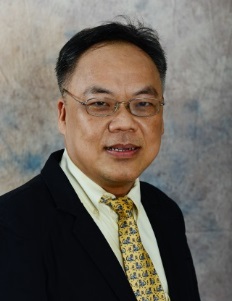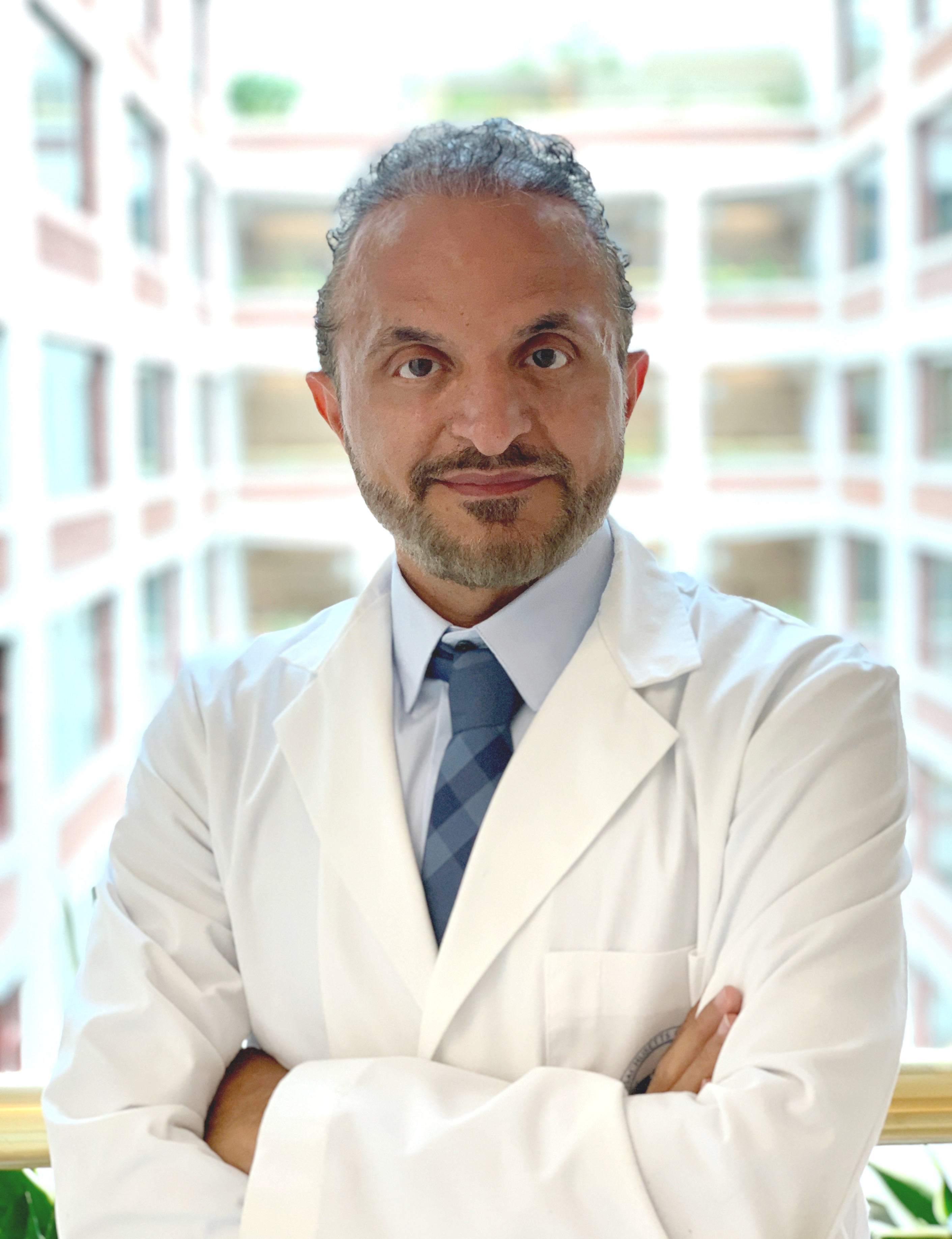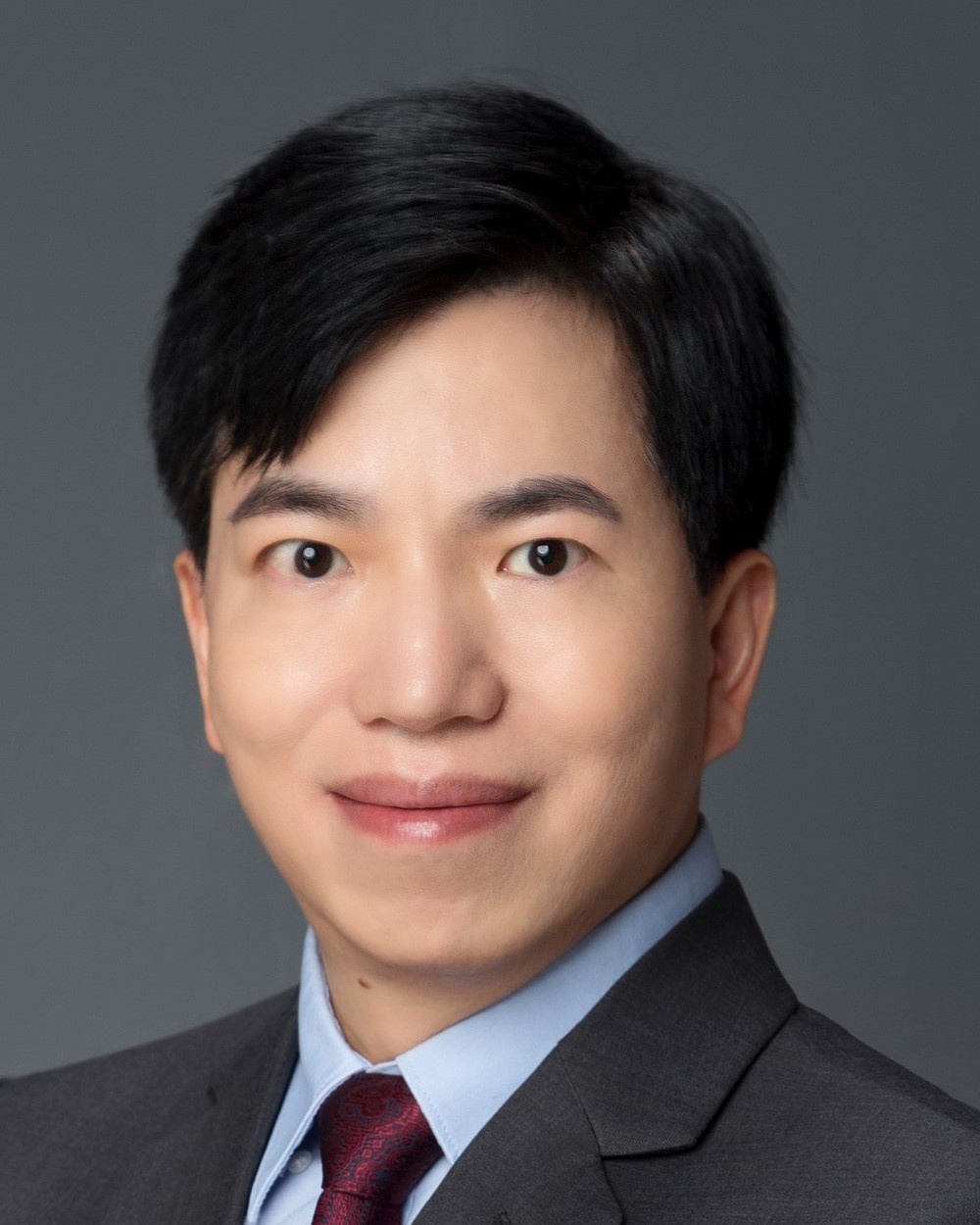Keynote Speakers
Dr. Eddie Y. K. Ng
PhD, PGDTHE, FEASA [EU], FASME [USA], FNAT [USA], FIETI [HK], FIET [UK], DFIDSAI [CN], Nanyang Technological University, SingaporeSpeech Title: DEVELOPMENT OF PHOTOPLETHYSMOGRAPHY (PPG) ANALYSIS TOOL WITH HEART RATE VARIABILITY THROUGH POINCARE AND SEQUENCE BANDWIDTH ASSESSMENT
Abstract: As the number of people affected by cardiovascular diseases (CVD) increases each year with hypertension, maintaining of blood pressure levels becomes crucial. Traditionally, it was done using sphygmomanometer which is the clinical standard for measurement. However, the method has proven to be impractical due to the lack of constant monitoring and convenience. Many researchers have thus investigated Photoplethysmography (PPG) wearable technologies in search for a better alternative. The wearables that are currently available such as smartwatches have demonstrated to be relatively inaccurate with motion and noise artifacts and they are not suitable for the adoption in healthcare applications with the lack of clinical information. Hence, there is significant need to develop a technique in obtaining accurate and useful clinical information from PPG.
This talk presents the development of a PPG analysis tool with the assessment of Heart Rate Variability (HRV). With a prototype that was developed in-house, data collection of ECG and PPG signals alongside heart rates and blood pressures using a blood pressure monitor was carried out. Subsequently, a simple yet accurate original window extraction algorithm was developed to carefully select and extract proper PPG waveforms to be used for analysis. The process included signal pre-processing, filtering, feature detection, window extraction and signal reconstruction. Following that, various measures of HRV such as time domain, frequency domain, non-linear (Poincaré) and its bandwidth were extracted to better analyse the PPG signals. The main focus of the study was to evaluate and analyse PPG through Poincaré and HRV sequence bandwidth. These 2 measures were used for analysis due to their potential significance in providing clinical usefulness and possibility of a new breakthrough. Lastly, a Graphical User Interface (GUI) application was designed to provide easy viewing of a summary of the HRV analysis.
Biography:
Eddie is elected as:
* Academician for European Academy of Sciences and Arts (EASA, EU);
* Fellow of the American Society of Mechanical Engineers (FASME, USA);
* Fellow (inaugural) for National Academy of Technology (FNAT, USA);
* Fellow of Institute of Engineering and Technology (FIET, United Kingdom);
* Fellow of International Engineering and Technology Institute (FIETI, Hong Kong);
* Distinguished Fellow for Institute of Data Science and Artificial Intelligence, (DFIDSAI, China);
* Academician for Academy of Pedagogy and Learning, (USA).
He has published numerous papers in SCI-IF int. journal (430); int. conf. proceedings (130), textbook chapters (>105) and others (32) over the 29 years. Co-edited 14 books in STEM areas.
He is in the Stanford list of the World’s top 2% Scientists since 2019 (ranked 173 as 0.001% in the field of Biomedical Engineering), and ranked # 8 (Worldwide) in Google Scholar under Biomedical, cited by 14504 (h-index: 62).
He is the:
* Lead Editor-in-Chief for the ISI Journal of Mechanics in Medicine and Biology for dissemination of original research in all fields of mechanics in medicine and biology since 2000;
* Founding Editor-in-Chief for the ISI indexed Journal of Medical Imaging and Health Informatics;
* Associate editor or EAB of various referred international journals such as Applied Intelligence, BioMedical Engineering OnLine, Computers in Biology & Medicine, and, Journal of Advanced Thermal Science Research.
More details can be found in: Cv: https://dr.ntu.edu.sg/cris/rp/rp00847.
Ng obtained Ph.D. at Cambridge Univ. and elected as an Academician for European Academy of Sciences and Arts, a Fellow of The American Society of Mechanical Engineers; The Institution of Engineering and Technology [UK], and International Engineering & Technology Institute [HK]. He researches in numerical simulation in the biomedical engineering, thermal-fluids and health-related diagnosis fields. He is Editor-in-Chief for 2 ISI-journals which were captured by the JCR within 2-years of their inauguration. He has been recognized internationally for academic excellence. He received numerous best papers, service awards and has graduated 23 PhD and 26 Master students. He was awarded the SPRING-Singapore Merit Award for his work in thermal imagers to screen SARS fever and contributions to the Singapore Standardization Program. Twenty-one of his papers have been adopted as references in Singapore Standard (SS-582, Parts 1&2: 2020) and ISO/IEC 80601-2-59: 2017. He serves as a panel member for Singapore Biomedical and Health Standards Committee since 2011. Being a co-inventor of 3 US patents on software classifiers to identify the different stages of breast cancer development in iTBra-system, he was accoladed with equity in a listed company. His ongoing work on non-contact screening for carotid artery stenosis and superficial vein-finder has resulted in 3 TDs. He has notable citations in the field of infrared physics & technology.
Dr. Bakhos A. Tannous
Professor of NeurologyDirector, Experimental Therapeutics and Molecular Imaging Unit, Harvard Medical School/Massachusetts General Hospital, USA
Speech Title: Nanotechnology-inspired therapeutics for malignant brain tumors
Abstract: In this presentation, we will discuss the development of novel nanoparticles and extracellular vesicles-based therapeutics for malignant brain tumors. We will also discuss how a burst of radiation therapy can prime gliomas for nanotherapeutics uptake and how to leverage this phenomena to overcome tumor immune suppression.
Biography: Dr. Bakhos Tannous is an internationally renowned scientist, educator and administrative leader. Dr. Tannous has created a legacy of multidisciplinary team to tackle some of the most pressing challenges in cancer in general and brain tumors in particular including new views for diagnosis and therapy. He is a Professor of Neurology at Harvard Medical School and act as the Director for the Interdepartmental Neuroscience Center, the Experimental Therapeutics Unit, and the Postdoctoral Division at the Massachusetts General Hospital. He is a member of the Dana Farber/Harvard Cancer Center and server as Co-Director of the Molecular Neurogenetics Unit-East and Director of the MGH Viral Vector Production Facility. His research interest includes imaging, high throughput discovery of gene/cell/drug therapies for pediatric and adult malignant brain tumors, with a primary focus on cancer stem cells, as well as blood-based cancer diagnostics. Dr. Tannous received many prestigious awards such as the Young Investigator Award from the Society for Molecular Imaging for 3 years in a row, National Cancer Institute Howard Temin Pathway to Independence Award in cancer research, Outstanding Investigator Award from the American Society for Gene and Cell Therapy, Several Partners in Excellence Awards and Innovation Awards, Beirut Golden Award for outstanding achievement in medicine, and several Outstanding Mentor Awards. He is a member of many national and international committees including Neurology Research Council, Center for Faculty Development, and Committee of Fundamental Research at the Massachusetts General Hospital, American Society for Gene and Cell Therapy, European Society for Medical Oncology organizing committees, several NIH review study sections including a standing member of the NCI career development and transition to independence review panel, and has served as a reviewer for many National and International grant committees.
Dr. William C. Cho
Ph. D., RCMP, FHKIMLS, FHKSMDS, Chartered Scientist (UK), FIBMS (UK)Queen Elizabeth Hospital, Hong Kong, China
Speech Title: Liquid Biopsy for Cancer: The Beginning of a New Era
Abstract: Liquid biopsy involves the isolation of tumor-derived entities, such as circulating tumor cells, circulating tumor DNA, and tumor extracellular vesicles, present in the body fluids of cancer patients. It is a simple, safe and less invasive alternative to surgical biopsy, allowing doctors to discover a range of information about a tumor from a simple blood sample. By its nature, liquid biopsy can capture tumor heterogeneity in patients with metastatic cancer and contribute to understanding and predicting metastasis. This talk will share some applications of liquid biopsy in cancer research, focusing on circulating cell-free nucleic acids, circulating tumor cells, extracellular vesicles, and microRNA research. Liquid biopsy will usher in a new era in cancer management, and it is a good source for early detection, disease surveillance (including detection of tumor burden, drug resistance, mutation and recurrence), and perhaps for future screening.
Keywords: Circulating cell-free nucleic acids, circulating tumor cells, extracellular vesicles (EVs), cancer cell plasticity, surface-engineered EVs
Biography: Dr Cho’s main research interests have been focusing on cancer studies to discover biomarkers for cancer diagnosis, treatment prediction and prognostication. As a seasoned researcher, Dr Cho has conducted cancer research in using molecular biology, proteomics, genomics, immunology as well as bioinformatics.
Dr Cho has published over 500 peer-reviewed papers (Lancet, Lancet Oncology, Annals of Oncology, Lancet Gastroenterology & Hepatology, Advanced Science, Nature Communications, PNAS, Molecular Cancer, Journal of Thoracic Oncology, Journal of the National Cancer Institute, Journal of Extracellular Vesicles, Clinical Cancer Research, Clinical Chemistry, Theranostics, etc) covering cancer biomarkers, proteomics, non-coding RNAs, Chinese medicine and dozens of books including "An Omics Perspective on Cancer Research", "MicroRNAs in Cancer Translational Research", “Drug Repurposing in Cancer Therapy: Approaches and Applications” and "Supportive Cancer Care with Chinese Medicine" etc. The accumulated impact factors of the journals over 3,500 and these papers have received > 23,000 citations. Dr Cho is listed in the world's top 2% most influential scientists (2022).
Dr. Simon James Fong
Data Analytics and Collaborative Computing LaboratoryAssociate Professor, University of Macau, Macau SAR, China
Honorary Professor, Durban University of Technology, Durban, South Africa
Adjunct Professor, ZIAT of Chinese Academy of Sciences, Zhuhai, China
Adjunct Professor, Xi'an Polytechnic University, Xi'an, China
Senior Visiting Scholar, Tsinghua University, Beijing, China
Ms. Gloria Li
University of Macau, China
Speech Title: AI in Histopathological Image Analysis for Cancer Detection: Past, Present and Future
Abstract: Since the inception of virtual microscopy in the 1990's, histology image analysis has migrated from optical microscope to visual inspection over digital histological images that were scanned and generated at high resolution. Detection of cancer and estimation of its prognosis are tedious process from the digital whole slide images because of its sheer area and complexity. Recently, by the efforts of multi-disciplinary research, artificial intelligence methods especially computer vision, object recognition, deep learning and XAI have become popular aids to grading and staging of cancer diagnoses and prognosis, by automatically analyzing over digital histopathology images. It was claimed that AI has helped pathologists to lower down the assessment errors by magnitude. Most of the research literature reports about identifying the cell types, segmenting the tumour and the cells. Current trend has it that the recognition of cells is done by deep learning due to its effectiveness in learning the features of the cells and recognizing them by their features. However, the accuracy and certainty of those histological deep learning methods are bottle-necked at the image level. Recognition rate is never perfect from solely the images. Lately it is discovered that the tumour immune microenvironment (TME) consists of many heterogeneous cell types that engage in extensive crosstalk among the cancer, immune and stroma tissues. In addition to just the cell types, the spatial organization of these different cell types in TME are observed as biomarkers for predicting metastasis, prognosis and drug responses via scRNAseq and spatial transcriptomics technologies. It opens up a new arena where AI can extend its power in analyzing the localization of cells, types of cells and their interactions, as a whole for further improving the prediction accuracy. In this talk, we will narrate the brief history, the current practices and future prospect of applications of AI on histological image analysis. This speech puts the future of AI research over histological images into a perspective that extra dimensions of analysis are in need for inferring more insights from histological image analysis. Novel models in this perspective are introduced. Future opportunities by integrating digital histopathology images with molecular omic data, spatial information, as well as meta-level analysis will be discussed for better understanding of a tumour ecosystem. During the keynote speech, our lab principal researcher, Dr. Gloria Li, will demonstrate several deep learning applications which are the cornerstone AI techniques over histopathological image analysis.
Biography: Simon James Fong graduated from La Trobe University, Australia, with a 1st Class Honours BEng. Computer Systems degree and a PhD. Computer Science degree in 1993 and 1998 respectively. Simon is now working as an Associate Professor at the Computer and Information Science Department of the University of Macau, as an Adjunct Professor at Faculty of Informatics, Durban University of Technology, South Africa. He is a co-founder of the Data Analytics and Collaborative Computing Research Group in the Faculty of Science and Technology. Prior to his academic career, Simon took up various managerial and technical posts, such as systems engineer, IT consultant and e-commerce director in Australia and Asia. Dr. Fong has published over 500 international conference and peer-reviewed journal papers, mostly in the areas of data mining, data stream mining, big data analytics, meta-heuristics optimization algorithms, and their applications. He serves on the editorial boards of the Journal of Network and Computer Applications of Elsevier, IEEE IT Professional Magazine, and various special issues of SCIE-indexed journals. Simon is also an active researcher with leading positions such as Vice-chair of IEEE Computational Intelligence Society (CIS) Task Force on "Business Intelligence & Knowledge Management", TC Chair of IEEE ComSoc e-Health SIG and Vice-director of International Consortium for Optimization and Modelling in Science and Industry (iCOMSI).
Gloria Li is currently a PhD candidate at the University of Macau. In 2017, Gloria graduated with BEng, major in • Electronic Communication Engineering, from Hebei University of Science & Technology, China. She graduated with a MSc degree on Computer Information Science in 2019. She is also the Head of Data Analytics and Collaborative Computing Laboratory, Zhuhai Institute of Advanced Technology, Chinese Academy of Science, Zhuhai, China. Ms Li is leading and managing the laboratory, in R&D as well as technological transfer and incubation. She is an entrepreneur with experiences in innovative I.T. contest, with her award-winning team in the Bank of China Million Dollar Cup competition. Her latest winning work includes the first unmanned supermarket in Macau enabled by the latest sensing technologies, face recognition and e-payment systems. She is also the founder of several Online2Offline dot.com companies in trading and retailing both online and offline. In 2021, Ms. Li has won a prize of 2nd runner-up of Global Management Challenge: WorldGMC (Macau region) by her analytics skills. Ms Li is also an active researcher, manager and chief-knowledge-officer in DACC laboratory at the faculty of science and technology, University of Macau.
More details will be updated...




